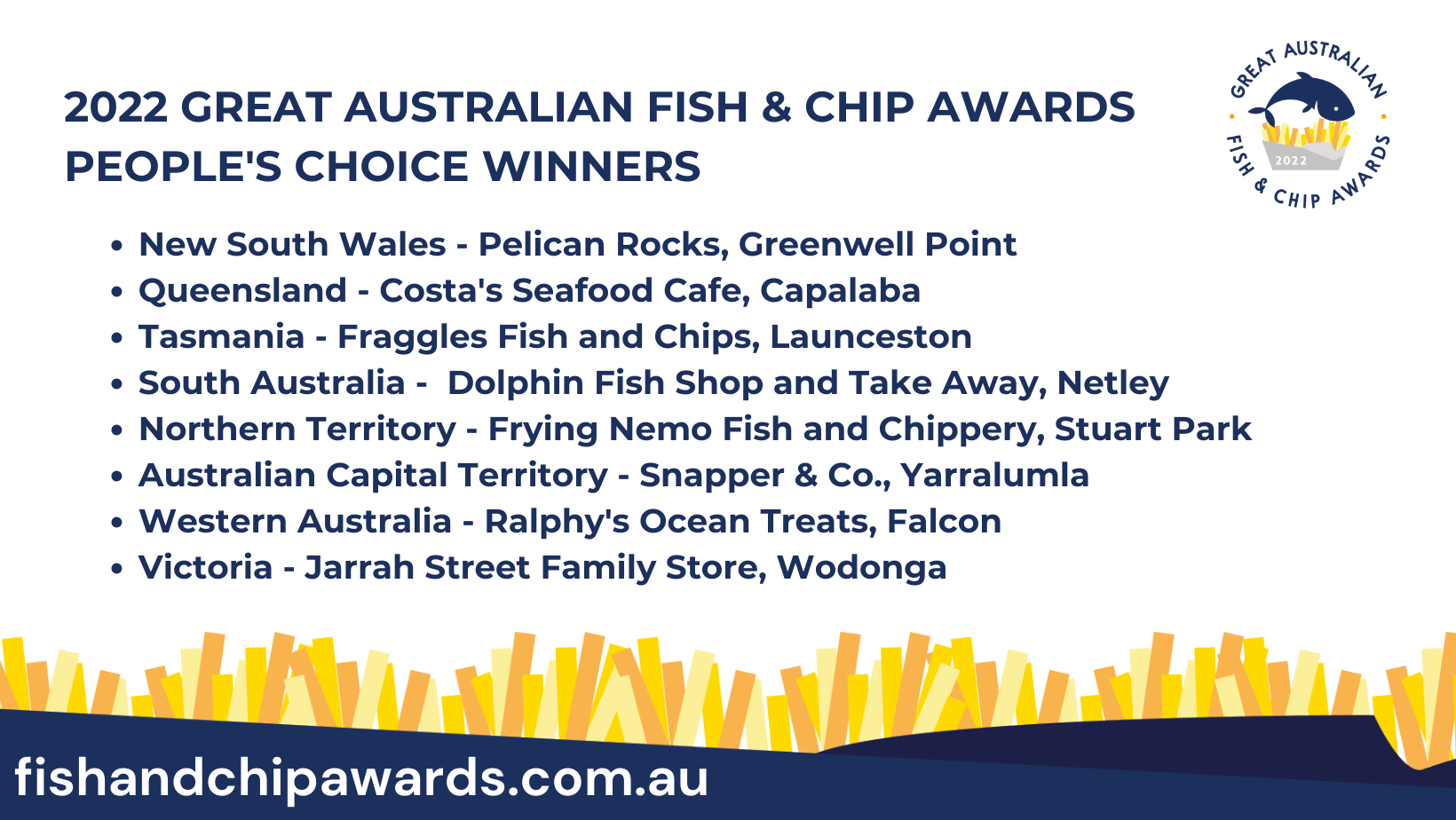
Australia’s Greatest Fish & Chips shops announced
The winners of the 2022 Great Australian Fish & Chip Awards, organised by Seafood Industry Australia (SIA), have been announced, with the country’s best fish & chippers in each state and territory crowned.
“In every town, across every state and territory, people spruik their fish & chips as number one. So, we’ve listened to the people, and crowned the most popular fish & chip shops around the country,” SIA CEO Veronica Papacosta said.
“After close to 60,000 votes from the public spread across 683 stores around the country, the winners of the 2022 Great Australian Fish & Chip Awards People’s Choice Awards have been crowned::
- New South Wales – Pelican Rocks, Greenwell Point
- New South Welshmen cast the most votes out of any state/territory, which meant this top store reeled in the most votes in the entire competition!
- Queensland – Costa’s Seafood Cafe, Capalaba
- Tasmania – Fraggles Fish and Chips, Launceston
- South Australia – Dolphin Fish Shop and Take Away, Netley
- Northern Territory – Frying Nemo Fish and Chippery, Stuart Park
- Australian Capital Territory – Snapper & Co., Yarralumla
- Western Australia – Ralphy’s Ocean Treats, Falcon
- Victoria – Jarrah Street Family Store, Wodonga
“It’s no secret the Australian seafood industry and foodservice sector. We encourage everyone to take a night or two off from the kitchen, get together with your friends and family, and support your local takeaway store and your fishers, while you enjoy some Great Australian Fish & Chips.
“The Great Australian Fish & Chip Awards showcase the very best fish & chip businesses around the country, while they celebrate our great Australian seafood, and the fishers who produce all of our favourite seafoods.
“The awards also highlight the importance of buying fresh, local, Australian seafood. It’s important to always ask for Aussie seafood; even why you’re buying fish & chips. Australian seafood is one of the most sustainable protein sources in the world and our fisheries management is world-class. However, 62 per cent of seafood eaten in Australia is imported, so until the Albanese Government’s Country of Origin Labelling for seafood sold in foodservice is brought in, it’s important you chat to your server about where your seafood is from.
“Buying Australian seafood supports Australian fishing families and regional communities they operate in. And, the good news is, it’s easy to support them. You do it just by eating some Great Australian Fish & Chips.”
For more information visit: www.fishandchipawards.com.au .
<ENDS>
For more information or to organise an interview with SIA CEO Veronica Papacosta or one of the winners
Please contact SIA Communications and Public Affairs Manager Jessica McInerney
e: jessica@463.9af.myftpupload.com or 0420 695 431
The 2020-110: Fish and Chips Awards is supported by funding from the Fisheries Research and Development Corporation on behalf of the Australian Government.
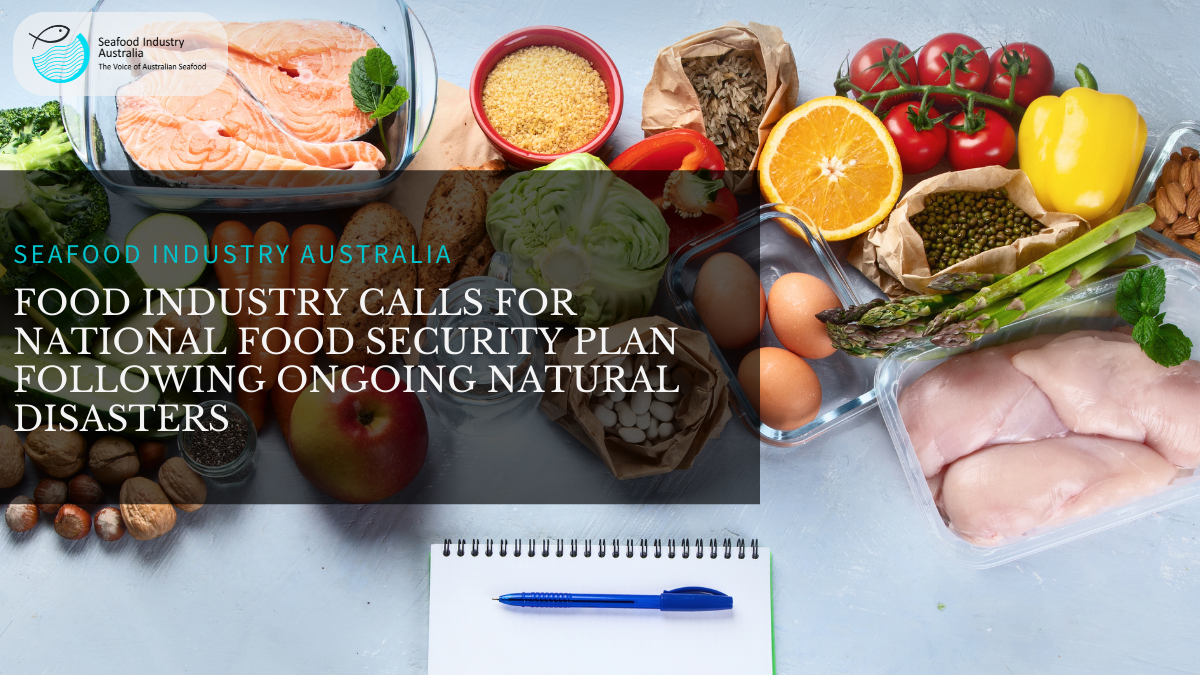
FOOD INDUSTRY CALLS FOR NATIONAL FOOD SECURITY PLAN FOLLOWING ONGOING NATURAL DISASTERS
Political bi-partisan support needed to protect consumers from sky rocketing food prices
The National Food Supply Chain Alliance, made up of nine influential national food industry associations, representing over 165,000 food businesses, is calling for the urgent establishment of a National Food Security Plan following unprecedented, long-term threats to its domestic food supply chain including ongoing natural disasters.
It believes the absence of a national plan has the potential to jeopardise the functioning of the economy, national security, and Australians’ wellbeing.
The Alliance, which represents every component of the nation’s food supply chain from paddock to plate, says food inflation will continue to rise unless a co-ordinated, national food supply chain strategy is adopted. A national strategy will help stabilise future food price fluctuations, and provide consistent, dependable access to sufficient volumes of food for domestic consumption.
It says it is critical in the world in which we now live, with more regular, more severe climatic events, that we examine all aspects of the nation’s food supply chain to ensure we become more resilient, self-sufficient, agile and flexible to cope with supply and demand shocks. It says recent threats have laid bare the nation’s food supply chain’s dependencies, risks, and vulnerabilities.
Other disruptors that impact Australia’s food supply chain, apart from natural disasters, include geo-political tensions, ongoing labour shortages, transport and logistics issues, financial challenges through rising cost of business, and future human and animal disease outbreaks.
The Alliance says despite countless reports and research in recent decades, Australia has failed to produce policy adoption and the implementation of a nationally co-ordinated, risk mitigation food supply chain strategy. All the potential disruptors to our food supply chain have never been brought together under ‘one’ co-ordinated national strategy.
The Alliance believes government and industry must work together to fully understand the complexities of the food supply chain and examine how specific events might impact the various pieces of the food supply chain jigsaw puzzle. This approach must incorporate the entire ‘living’ food supply chain eco-system, from paddock to plate, encompassing production, processing, distribution, retail, consumption, and disposal.
From the perspective of both government and industry, research has shown there are many social and economic benefits from a more efficient, more sustainable, and self-sufficient national supply chain. It will provide more stability to food related businesses, boost innovation and technology, enhance the nation’s food processing capacity, create jobs and, most importantly, provide the community with the confidence it needs in the nation’s food security.
Recommendation: That Australia urgently establish a National Food Security Plan. Chaired by the responsible Minister, with input from multiple other relevant portfolios, and working with the support and technical guidance of a Food System Advisory Reference Group made up of representatives across all aspects of the food supply chain. The Group will review recommendations and help with the adoption of industry-wide initiatives that will help eliminate the current risks and disruptions in the system.
What is the National Food Supply Chain Alliance
The National Food Supply Chain Alliance (NFSCA) represents all facets of Australia’s food supply chain from farmers, processors, grocers and butchers, independent supermarkets, convenience stores, wholesale suppliers and distributors to food retailers including cafes, restaurants, hotels, and clubs. In total, the nine national food industry associations represent over 165,000 businesses with a combined revenue of a staggering $200 billion and who employ almost 1 million workers.
The Associations include: The National Farmers Federation (NFF), Australian Meat Industry Council, (AMIC), Independent Food Distributors Australia (IFDA), Master Grocers Australia (MGA), the Australian Association of Convenience Stores (AACS), AUSVEG, Seafood Industry Australia (SIA), the Restaurant and Catering Industry Association and the Refrigerated Warehouse and Transport Association of Australia.
Contact: Richard Forbes CEO – Independent Food Distributors Australia – 0427 270 687
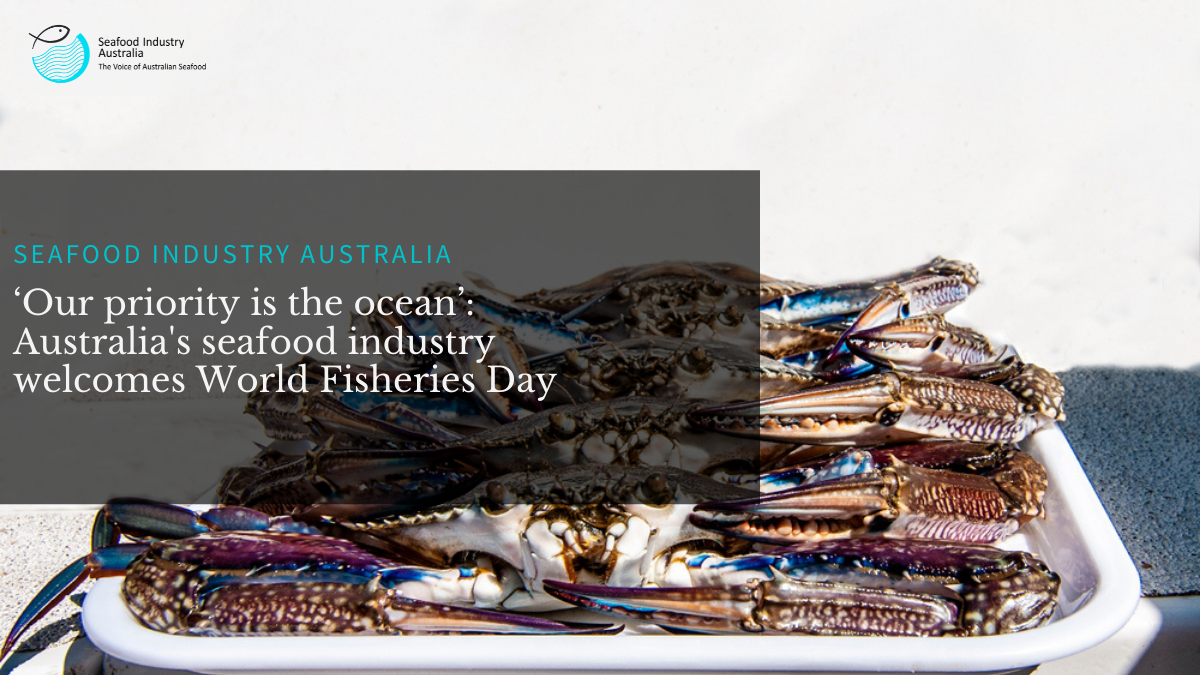
‘Our priority is the ocean’: Australia’s seafood industry welcomes World Fisheries Day
Australia’s seafood industry is encouraging the community to support our fishers and our Great Australian Seafood as part of World Fisheries Day celebrations on Saturday, November 21.
“Australia’s seafood industry is responsibly managed, and produces some of the best seafood in the world,” Seafood Industry Australia (SIA) CEO Veronica Papacosta said.
“There’s no better way to celebrate World Fisheries Day than by tossing a few Great Australian Prawns on the barbie, a side of Tasmanian Atlantic Salmon in the oven, pan-searing some iconic Australian Barramundi, or voting for your favourite fish and chip retailer in the Great Australian Fish & Chip Awards which start today.
READ MORE: ‘Batter up’: The search begins for Australia’s Greatest Fish & Chips
“Right now, 70 percent of seafood eaten in Australia is imported and today as part of World Fisheries Day we’re calling on the community to support their Australian seafood industry, after an especially hard year, and ask for Aussie seafood whether it’s at their fishmonger, fish and chip shop, or the local Thai restaurant.
“Australia’s seafood industry is subject to some of the most intensive fisheries management and reporting protocols in the world. As an industry, accountability is incredibly important. Every Australian boat, catch and pot has to be logged and submitted to the relevant authority. As fishers, our priority is the ocean. It’s our livelihood, and the future livelihood of generations to come.
“We have wonderful fisheries management structures here in Australia and our Fisheries Managers let our fishers know what they can catch, where they can catch it, when and how they can catch it, and how many they’re allowed to catch each year. And most importantly, it’s working.
“Australia’s Commonwealth-managed fisheries are continually given the tick of sustainability. This is something our commercial fishers are very proud of, and is unprecedented internationally. The footprint of Australia’s trawlers is one of the smallest in the world. Coupled with our aquaculture sector – who provide fresh, high-quality seafood, year-round – Australian seafood is one of the best managed and most sustainable protein sources in the world.
“Australians can be confident that every time they buy Great Australian Seafood it is coming from well-managed, sustainable fisheries, which ensures that our fish stocks will be around for generations to come.”
<ENDS>
For more information or to organise an interview with SIA CEO Veronica Papacosta
Please contact SIA Communications and Public Affairs Manager Jessica McInerney
e: jessica@463.9af.myftpupload.com or 0420 695 431
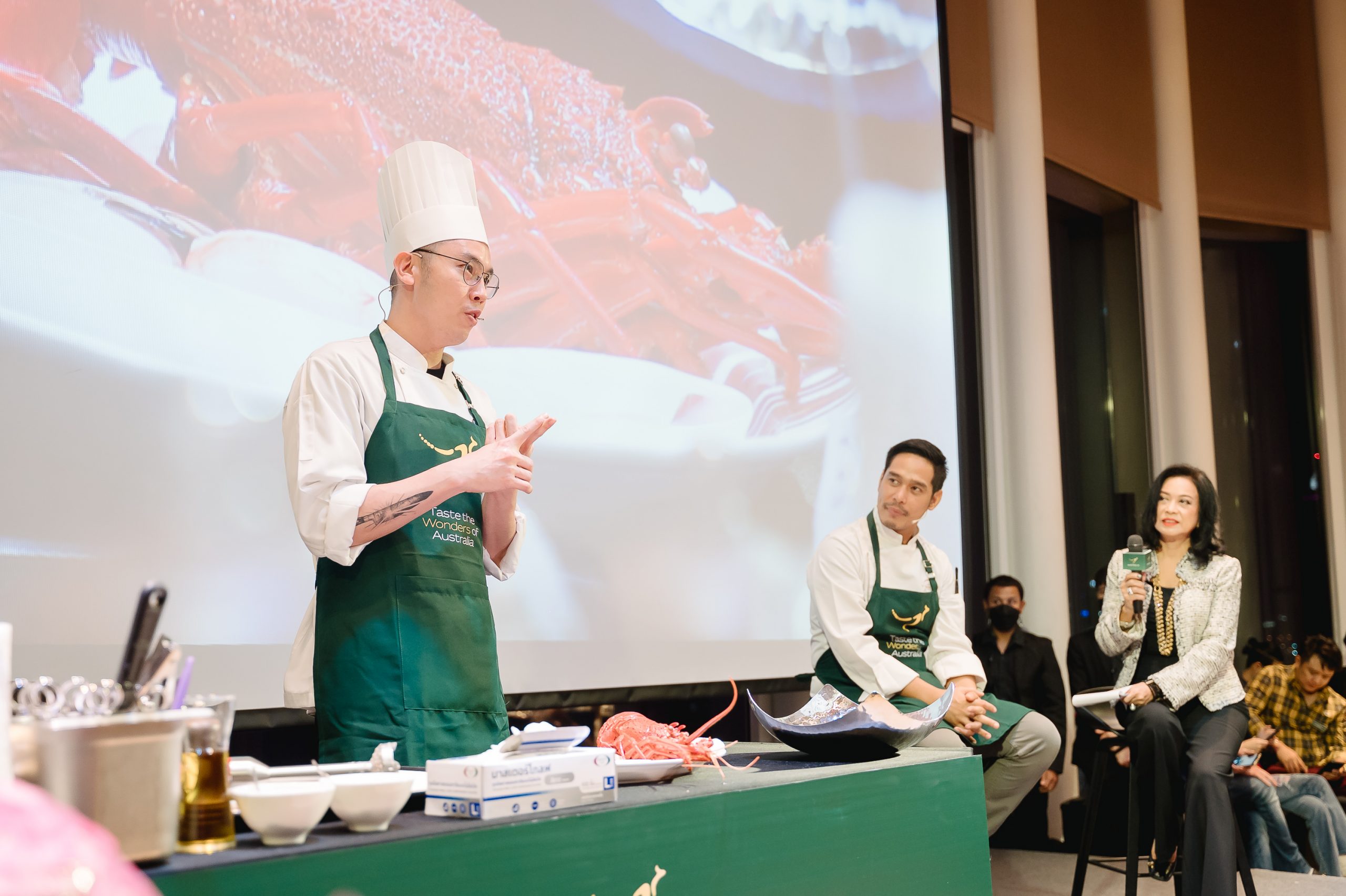
Thailand tastes the Wonders of Australia
Thailand’s fabulous flavours and Australia’s finest produce – it’s a combination that’s hard to beat and one that was on full display in Bangkok this week at the Taste the Wonders of Australia event.
Celebrity chef Ksynn Detcharoen, of Bangkok Private Chef Dining and MasterChef Thailand fame, created a Thai fusion feast, blending the best attributes of the two cultures to highlight the culinary possibilities of Australian produce to some of the country’s most influential foodies.
The Taste the Wonders of Australia event included a cooking demonstration and trade displays showcasing the true flavours of Australia’s premium produce to 160 of Thailand’s culinary experts, chefs, foodies, importers, distributors and business leaders, along with representatives from the Australian and Thai governments.
Among the guests at the Taste the Wonders of Australia event was Austrade Senior Trade Commissioner and Minister-Counsellor (Commercial) Michael Helleman.
“Thai cuisine is famous for its use of fresh and quality ingredients,” Mr Helleman said. “Every ingredient in a dish has to speak for itself, and Australian exporters can provide premium quality products.
“Australia is known for its quality produce, from the freshest vegetables to naturally raised tender meat with beautiful marbling and flavours. Australian seafood is similarly known for its superior taste and sustainable processes from packaging to harvesting.
“Our dairy products, fruits and vegetables meet the highest standards. Australia has one of the most exciting wine scenes in the world with 65 wine regions and a diverse range of styles.
“This makes Australian products the perfect match for Thai consumers who are very aware of and demand quality. Australian produce and wine are already sought after by chefs and consumers for their excellent quality and distinctive taste.”
Chef Ksynn’s menu opened with a Seafood Spicy Fruit Salad of Australian seafood, fruits and vegetables, followed by Roti and Lamb Rack Curry, showcasing Australian dairy, vegetables and lamb.
The main course, Beef Fat Fried Rice with Grilled Australian Beef Rump Cuts, was topped with baked mussels, mozzarella cheese and Australian butter.
Dessert was the Australian classic Lamington – soft sponge cake with chocolate sauce, coconut flakes, mousse and yoghurt ice cream with seasonal Australian fruit.
The Thai fusion menu was paired with Australian wines from some of the country’s best wine growing regions, to match the distinct flavours of Thai cuisine.
“As a professional chef, I have come to rely on Australian products for their quality, variety and sheer consistency,” said Chef Ksynn, who created the feast with assistance from a team of student chefs from the renowned MSC Culinary School.
“You can see this in the menu I have created. The beef is raised in natural, pristine environments, and the vegetables and fruits are the finest you can get.”
The Taste the Wonders of Australia event was jointly organised by the Australian Food and Wine Collaboration Group.
The group consists of MLA, Seafood Industry Australia, Dairy Australia, Horticulture Innovation Australia and Wine Australia, with the support of the Australian Government.
Thailand – a growing opportunity for Australia’s food producers
Thailand is the second-biggest economy in ASEAN and a major global tourism destination. This dynamic and consumer-driven market with rising disposable income and a huge visitor market of about 35 million is increasing its demand for imported food and beverages, offering many opportunities for Australian exporters.
Thai importers and customers appreciate Australia’s “food safety and sustainability” credentials and perceive it as a high-quality supplier.
Thai customers are turning to Australian produce for its lower chemical use in the production process, as concerns about food safety become more widely known. Australia producers are known to deliver some of the best flavours with the country’s unique environment, world-class producers and superior quality control standards.
Buyers expect Australian produce to be of a high standard, have a longer shelf life and taste better when compared to imported products from other countries.
Acknowledgements
The Australian Food and Wine Trade Collaboration was created to promote quality Australian food and beverages in key international markets. The members and funding partners are Dairy Australia, Hort Innovation, Meat & Livestock Australia, Wine Australia and Seafood Industry Australia.
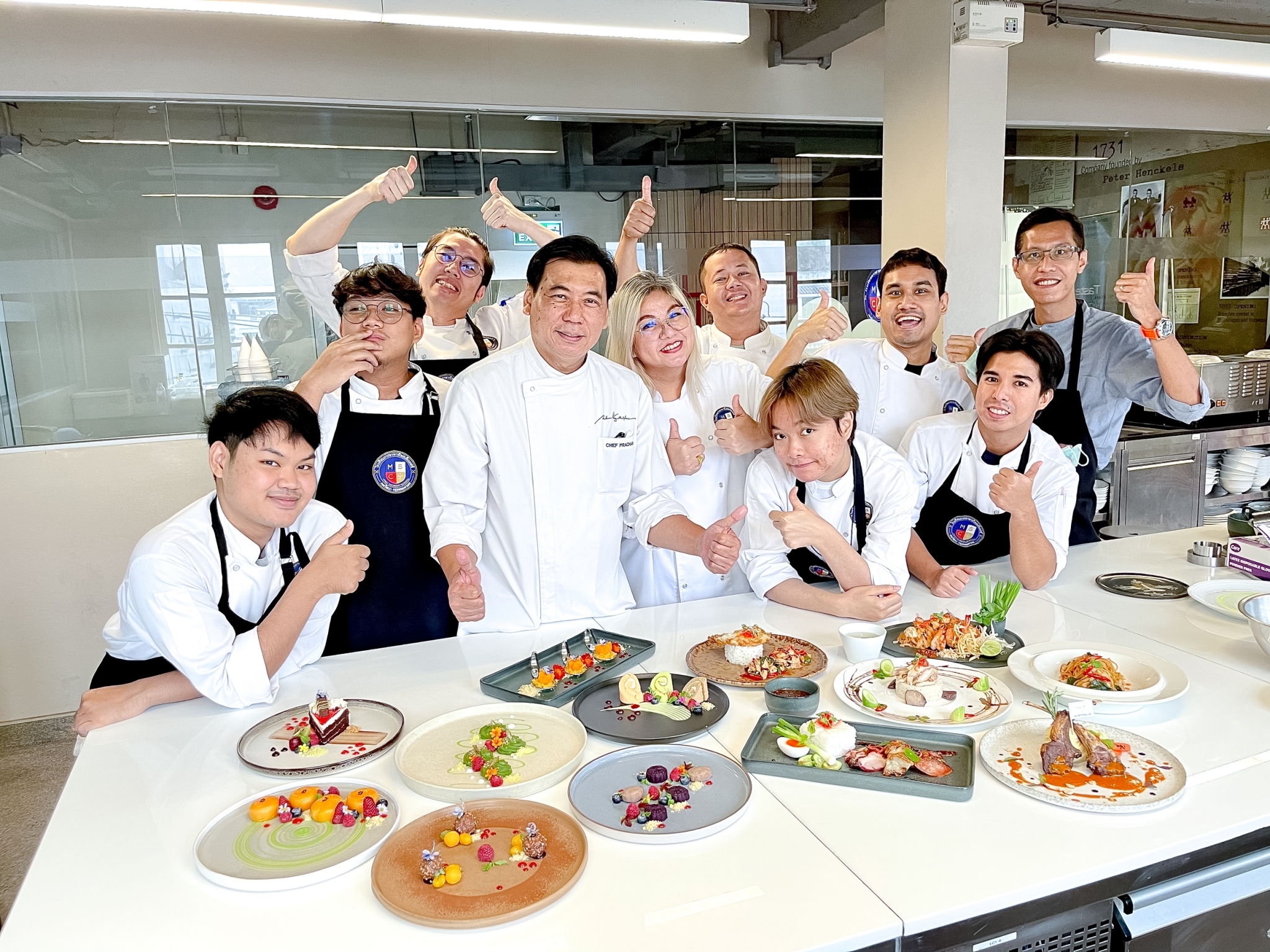
Taste the Wonders of Australia
Some of Australia’s finest food and wine will feature on the menu on Tuesday night when some of Thailand’s most influential foodies sit down for a feast of the best Australia has to offer.
The Taste the Wonders of Australia dinner, on Tuesday 1 November, is providing the chance for 160 of Thailand’s most influential culinary experts, chefs, foodies importers and distributors, along with representatives from the Australian and Thai governments, to taste the true flavours of Australia’s premium product.
Celebrity Chef Ksynn Detcharoen, of Bangkok Private Chef Dining and MasterChef Thailand, and a team of budding chefs from the renowned MSC Culinary School have created a Thai fusion menu to highlight Australia’s finest food and wine.
The menu includes Australian Seafood Spicy Fruit Salad, Roti and Lamb Rack Curry, Beef Fat Fried Rice and Grilled Australian Rump Cuts topped with Baked Australian Mussels and Australian Butter.
The all-Australian affair ends fittingly with a classic Aussie Lamington, soft sponge cake with chocolate sauce, coconut flakes, mouse and ice cream served with seasonal fruit.
Complementing the feast are some of Australia’s finest wines, matched perfectly to suit the distinct flavours of Thai cuisine. Featured wines include a Frankland River Riesling, a Geelong Pinot Noir, a Barossa Shiraz, a Margaret River Cabernet Sauvignon and a Botrytis Semillon.
The event has been created by the Australian Food and Wine Collaboration Group, which includes Dairy Australia, Meat & Livestock Australia, Wine Australia, Hort Innovation and Seafood Industry Australia.
The five organisations have united in a Team Australia approach to develop new export opportunities for Australian farmers and food producers.
The partnership leverages the individual strengths, expertise and connections in engaging with overseas markets.
The Collaborative Group has received an Agricultural Trade and Market Access Cooperation (ATMAC) grant of $500,000.
The Australian Food and Wine Collaborative Group is targeting four high-potential markets across Asia including Thailand, South Korea, Vietnam and Indonesia.
<ENDS>
For more information please contact SIA Communications and Public Affairs Manager Jessica McInerney on jessica@463.9af.myftpupload.com or 0420 695 431.
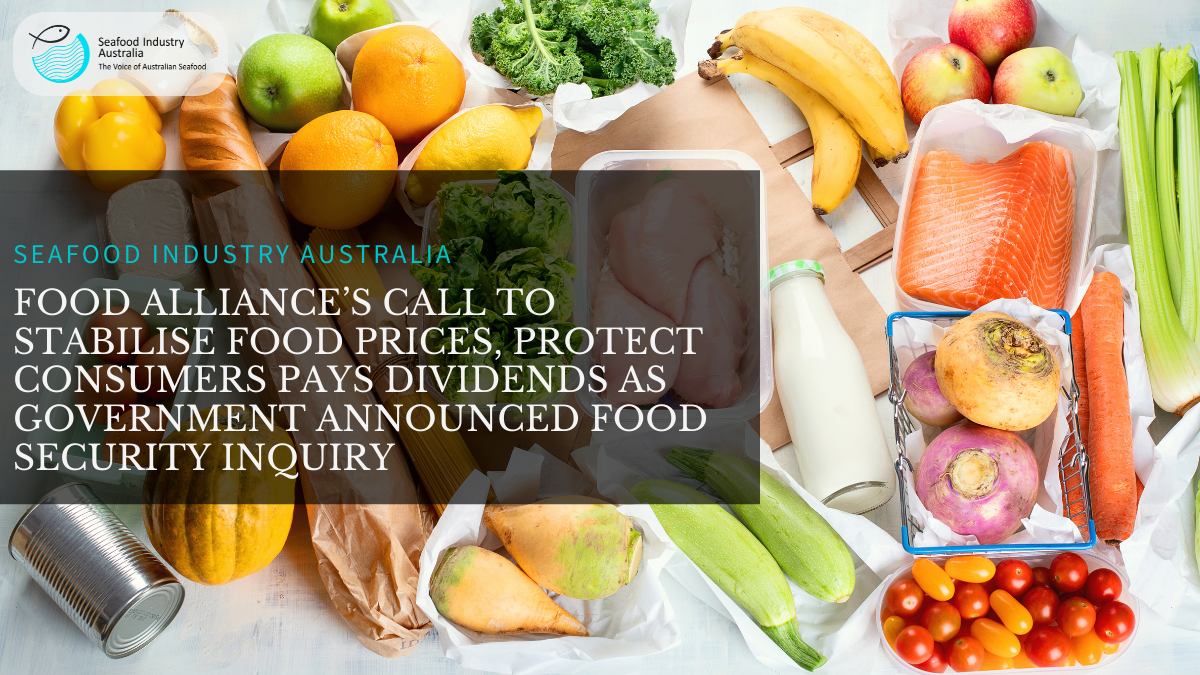
FOOD ALLIANCE’S CALL FOR A NATIONAL FOOD SECURITY STRATEGY TO STABILISE FOOD PRICES AND PROTECT CONSUMERS PAYS DIVIDENDS
Government announces inquiry into Food Security in Australia
The National Food Supply Chain Alliance, made up of nine national food industry associations representing 160,000 businesses, says the Government’s announcement that it will commence an inquiry into food security in Australia is welcome and is something the Alliance has been calling for, for many months, following devastating natural disasters.
The Alliance says a successful outcome at the completion of the inquiry is one where there is bipartisan support to develop a national food supply chain strategy that protects the Australian consumer from ongoing global and domestic disruptions which will ultimately help stabilise food price fluctuations and provide consistent, dependable access to sufficient volumes of food for domestic consumption.
From an industry perspective, improvements in supply chain management will boost business, enhance innovation and technology, create jobs, and increase broader economic development opportunities.
Spokesperson, Richard Forbes said there has never been a more critical time to examine Australia’s food system and then develop a long-term national food plan with future resilience in mind, “The threat to Australia’s national food supply chain, sparked by the pandemic, current geo-political tensions, the threat of a global recession plus the ongoing threat of natural disasters due to climate change, have highlighted the nations vulnerability to both domestic and global factors.
“These events have destabilised our supply chains and triggered flow-on impacts for both the economy and our communities. A reduction in food availability and increased food prices is an example of this. The culmination of these events has placed unprecedented stresses on food supply chains, with bottlenecks in labour, supply of product, processing, transport, and logistics. Recently the Alliance calculated worker shortages of 172,000 from paddock to plate.
“If we look at natural disasters alone, The Intergovernmental Panel on Climate Change (IPCC) has warned that extreme weather events – like floods, heatwaves, fires and droughts – will become more frequent and more severe in Australia due to climate change. And this is likely to lead to more frequent disruptions to food supplies and rising food prices. We are living in a country of rolling natural disasters”.
The Alliance says studies have shown time and time again that achieving supply chain resilience must be a ‘multi-level’ effort meaning it should bring different groups of stakeholders together to work collectively to mitigate and soften the harm caused by supply chain disruptions. Designing a resilient supply chain is a balancing act between our traditional objectives for managing supply chains, and the criteria we will apply to supply chains of the future.
In recent years, several reports and research papers have been written about this issue, but none have been implemented. If there was ever a time to develop and implement a national food supply
chain strategy, it is now.
What is the National Food Supply Chain Alliance
The National Food Supply Chain Alliance (NFSCA) represents all facets of Australia’s food supply chain from farmers, processors, grocers and butchers, independent supermarkets, convenience stores, wholesale suppliers and distributors to food retailers including cafes, restaurants, hotels, and clubs. In total, the nine national food industry associations represent over 160,000 businesses with a combined revenue of a staggering $224 billion and who employ almost 1 million workers.
The Associations include: The National Farmers Federation (NFF), Australian Meat Industry Council, (AMIC), Independent Food Distributors Australia (IFDA), Master Grocers Australia (MGA), the Australian Association of Convenience Stores (AACS), AUSVEG, Seafood Industry Australia (SIA), the Restaurant and Catering Industry Association and the Refrigerated Warehouse and Transport Association of Australia.
Contact: Richard Forbes CEO – Independent Food Distributors Australia – 0427 270687
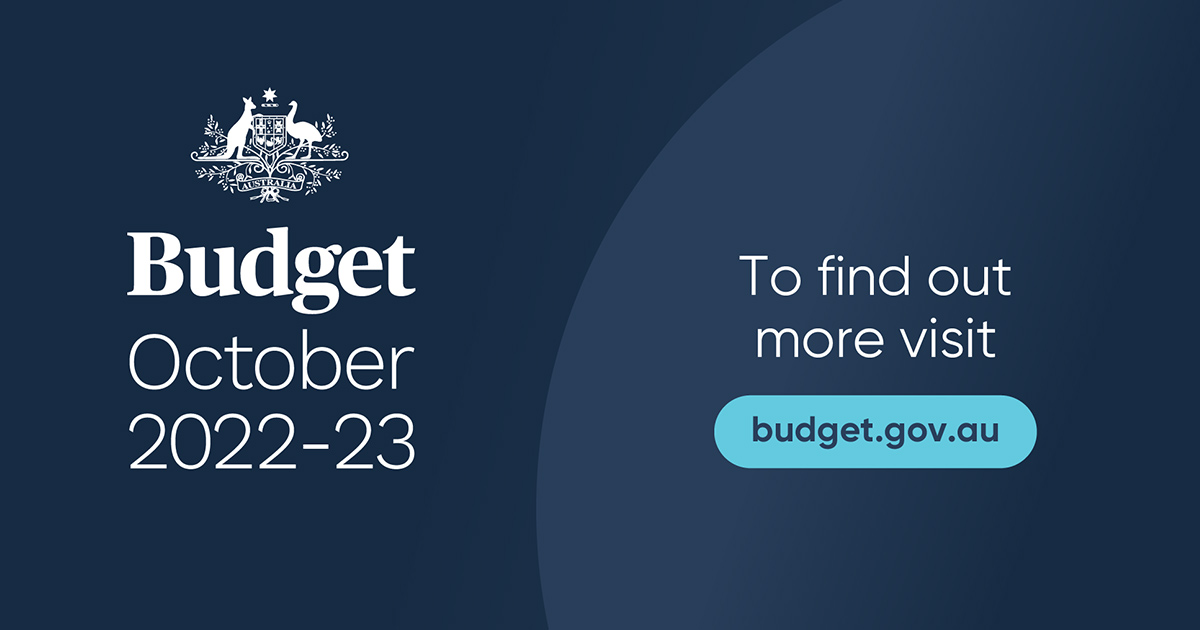
SIA’s guide to the Albanese government Federal Budget 2022-23 at-a-glance
There were a number of announcements in last night’s 2022-23 Albanese government Federal Budget which will provide ongoing and meaningful support to the Australian seafood industry including a commitment to implementing mandatory Country of Origin Labelling for seafood sold in foodservice, and funding for the national rollout of the Stay Afloat program.
We have welcomed these commitments, a copy of our media statement can be found here.
Our budget overview of the information you need to know is available below:
- Country of Origin Labelling
- $1.6 million has been committed to work with the seafood and hospitality sectors to develop mandatory Country of Origin Labelling for seafood in hospitality that will help consumers know if the seafood they order is Australian, while minimising costs and compliance burden on businesses.
- Read SIA’s press release here.
- Stay Afloat national roll out
- The Government will provide $1.5 million over 2 years from 2022–23 to support the national rollout of Seafood Industry Australia’s Stay Afloat Program, which will establish up to 50 hubs in Australian fishing communities to provide mental health and wellbeing support for commercial fishers and seafood workers.
- Read SIA’s press release here.
- South East Trawl Fishery structural readjustment
- $3m has been allocated or AFMA fee waivers
- $200,000 to extend and broaden the Tuna Champions program
- $5.9m for Fisheries Habitat Restoration
- Powering Australia – Development of Australia’s Seaweed Farming
- FRDC has been allocated $8.1m over three years through DAFF for seaweed farming. The project supports the commercialisation of seaweed as a low emissions feed and support projects that lower barriers to market entry. The funding will support the establishment of the National Hatchery Network, policy reform, and priority research and development activities. This measure delivers on the Government’s election commitment as published in the Plan for a Better Future.
- Marine Parks
- The Government will provide $10.8 million over 4 years from 2022–23 to improve marine park management in Australia, support the health and biodiversity of Australia’s oceans and strengthen Australia’s international engagement and leadership. The cost of this measure will be partially met from within the existing resourcing of the Natural Heritage Trust special account. This measure delivers on the Government’s election commitment as published in the Plan for a Better Future.
- Australian Manufacturing
- The Government will provide $135.5 million over 4 years from 2022–23 to continue to support Australian industry to develop domestic manufacturing capabilities and upskill the manufacturing sector workforce.
- Drought readiness
- The Government will provide $20.8 million over two years from 2022–23 to support Australia’s readiness to respond to drought events. This includes, $14.3 million over two years from 2022–23 to drive adoption of established drought resilience research. $6.6 million over two years from 2022–23 to maintain existing capability for future drought preparedness and support delivery of the National Drought Agreement and National Drought Plan.
- Aviation
- $60.0 million over two years from 2023–24 to upgrade Hobart Airport runway and airfield facilities.
- $55.0 million over two years from 2022–23 to upgrade border services facilities at the Newcastle Airport international terminal.
- $17.9 million over two years from 2022–23 to undertake planning and design work for border services facilities at Western Sydney International Airport.
- Biosecurity
- The Budget includes a substantial down-payment on the Government’s commitment to long-term, sustainable funding for biosecurity through new investments worth $134.1 million, including fast-tracking $61.6 million in funding over the next two years. $11.7 million over 4 years from 2022-23 (and $3.3 million per year ongoing from 2026-27) to expand our detector dog capability at the border, by investing in an additional 20 detector dogs and handlers.
- $46.7 million increased funding for traceability initiatives
- $4 million to establish a new Inspector-General for animal welfare.
- $302 million to invest in sustainable agriculture through the Natural Heritage Trust.
- Budget revisions and savings
- As a result of its Spending Audit, the Government will improve quality of spending by redirecting funding from 2019–20 Budget and 2022–23 March Budget measures. This totals $47.1 million over 4 years from 2022–23 in relation to agriculture, fisheries and forestry.
- Savings include:
- $30.0 million over 4 years from 2022–23 for the partial reversal of the 2022–23 March Budget measure titled Regional Accelerator Program – establishment, including redirecting uncommitted funding for the National Centre for Digital Agriculture Innovation and Adoption Hubs.
- $14.0 million over two years from 2022–23 for the partial reversal of the 2022–23 March Budget measure titled Agriculture – continuing to deliver Agriculture 2030, including not proceeding with Round 2 of the Agricultural Shows Development Grant program.
- $2.8 million in 2022–23 for the partial reversal of the Agriculture Shows and Field Days program, including redirecting uncommitted funding from Round 2 of the program.
- $0.3 million in 2022–23 for the partial reversal of the 2019–20 Budget measure titled National Agricultural Workforce Strategy program.
A copy of the Treasurer’s speech is available here. A copy of the Department of Agriculture, Forestry and Fisheries budget overview infographic is available here, and sector overviews factsheets are available here. A copy of the FRDC budget recap is available here. A copy of the iSentia budget overview is available here.
A copy of press releases from Minister for Agriculture Murray Watt can be found here, Minister for Industry Ed Husic can be found here, and Minister for the Environment Tania Plibersek can be found here.
For more information on the 2022-23 Federal Budget, or specific points please www.budget.gov.au.
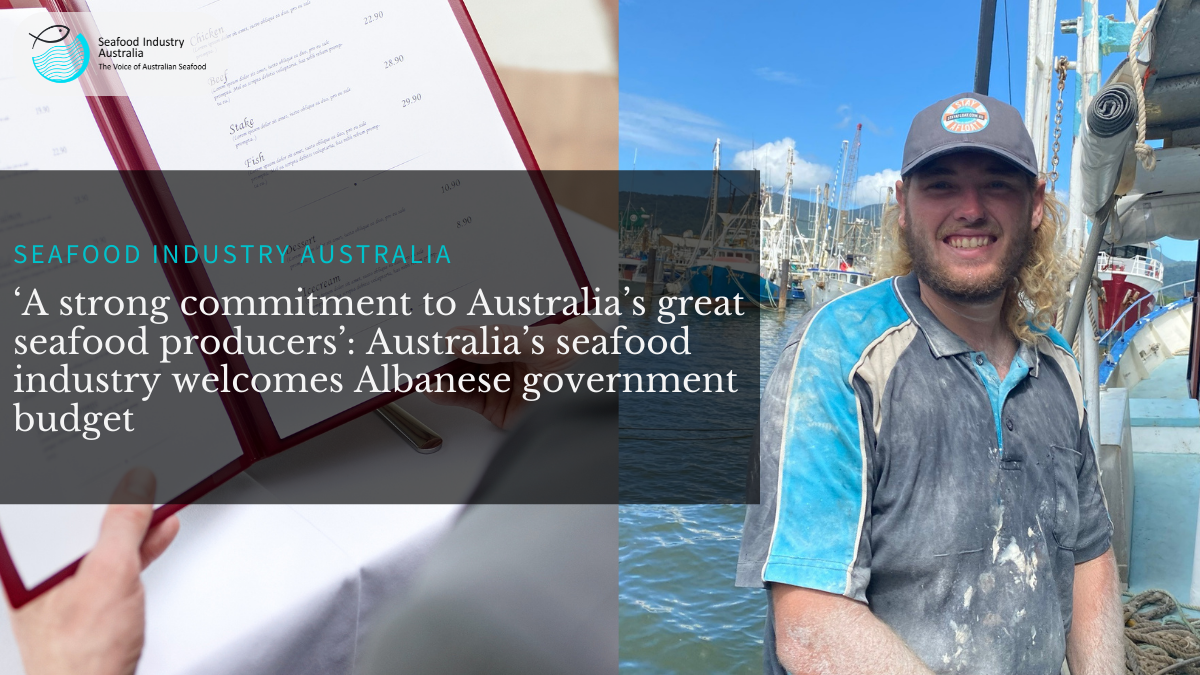
‘A strong commitment to Australia’s great seafood producers’: Australia’s seafood industry welcomes Albanese government budget
Seafood Industry Australia (SIA), the national peak-body representing Australia’s commercial seafood industry, has welcomed the October 2022 Albanese government budget, supporting its commitments to the introduction of Country of Origin Labelling for Australian seafood sold in foodservice (p.155), and announcement of funding for the national rollout of their industry-specific mental health program, Stay Afloat (p.139).
“On behalf of Australia’s commercial seafood industry I would like to extend my congratulations and thanks to Prime Minister Anthony Albanese, Treasurer Jim Chalmers, Minister for Agriculture Murray Watt, Minister of Industry Ed Husic, Assistant Minister Manufacturing Tim Ayres and Australian Labor Party (ALP) for their strong commitment to Australia’s great seafood producers,” SIA CEO Veronica Papacosta said.
“In the lead-up to the May 2022 Federal Election, SIA secured a landmark commitment from the ALP to work with the seafood and hospitality sectors to implement mandatory Country of Origin Labelling (CoOL). We are thrilled to see the ALP allocate $1.6 million in this budget to deliver on this commitment. The implementation of mandatory CoOL for seafood in foodservice has been one of SIA’s key priorities for the past five years, and a cause championed by industry and consumers for decades.
“Since 2018, when consumers buy fresh seafood anywhere around Australia, by law, it has to be labelled with its country of origin, however there has been no requirement for this in the foodservice sector. Australians love their seafood and next to freshness, country of origin is one of the most influential factors for a consumer choosing which seafood they buy. The introduction of CoOL in foodservice will help consumers make informed decisions about the food they buy in restaurants, cafes and take-away food stores around the country, and allow consumers to support our great, Australian seafood producers.
“Right now, for food safety purposes, the supply chain of seafood is known in foodservice all the way to the kitchen door, however, the information is often not passed on. What we’d like to see is Australian seafood identified on menus, simple as that. At a minimum we’d like to see something like Australian Barramundi listed, and businesses can then be as specific as they’d like. For imported seafood a simple ‘i’ to denote it’s imported with a clear explanation of what it means printed somewhere on the menu, similar to identifying if something is gluten free or vegan.
“Importantly, we recognise the important role imported seafood plays in the market and in consumer diets, but overwhelmingly we’ve heard consumers struggle to support industry when they dine out, because they simply can’t tell which seafood is Australian. Australia imports 66% of seafood consumed, so having this sort of information clearly available to consumers in foodservice is critical to allow them to supply chain transparency, and choice.
“We thank the ALP for their commitment to fund a two-year national roll-out of the Stay Afloat mental health program to 50 seafood hubs around the country. This is a wonderful result, and we look forward to being able to provide critical and much needed support to our industry members.
“Research has shown Australia’s commercial fishers experience twice the base-rate of psychological stress than the general population, and this is not okay. We’ve run a successful pilot of the Stay Afloat program, and provided life-altering support.
“This pilot program has been specially developed to help break the stigma associated with poor mental health within industry, connect industry members with existing services and supports, and provide education to primary health networks regarding the seafood industry’s operations and unique stressors including reforms and the implications of natural disasters.
“We thank the Albanese Government for their support, and we look forward to seeing both these initiatives brought to life.”
<ENDS>
For more information or to organise an interview with SIA CEO Veronica Papacosta
please contact SIA communications and public affairs manager Jessica McInerney
E: jessica@463.9af.myftpupload.com M: 0420 695 431



